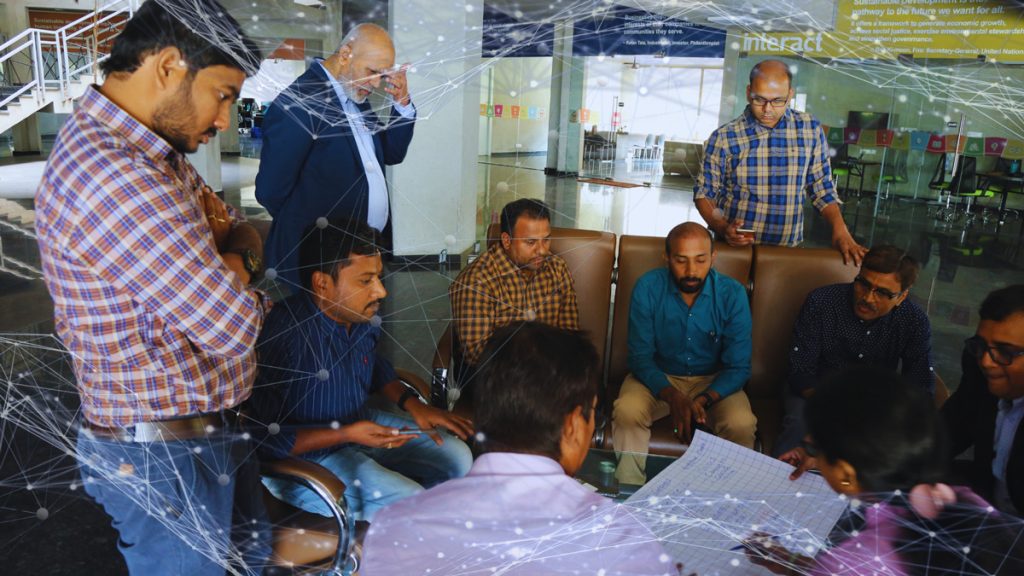
Succession planning is a cornerstone of business continuity, ensuring that enterprises can sustain their operations seamlessly, even as key personnel change. At Sathguru Soft, we believe that a well-thought-out succession plan is not just about preparing for the future but also about empowering individuals today. A crucial element in this process is the art of delegation, which not only prepares future leaders but also fosters a culture of trust and accountability.
Delegation: The First Step Towards Succession
Delegation is often viewed as a managerial tool, but at its core, it is a profound act of trust. It involves entrusting others with responsibilities and decision-making powers, thereby enabling them to grow into their roles. Unambiguous delegation, where responsibilities are clearly defined and authority is explicitly granted, is fundamental to this process. It allows individuals to make decisions quickly and confidently, fostering a culture of proactive problem-solving.
This approach is not without its risks. Decisions made in the absence of the usual authority may not always align with the desired outcomes. However, at Sathguru Soft, we view these missteps as opportunities for growth. The freedom to make mistakes, without fear of harsh criticism, encourages learning and adaptation. This progressive environment is crucial for developing decision-making skills and leadership qualities in potential successors.
The Two Limbs of Succession: Cloning for Continuity
Succession planning can be conceptualized as having two limbs: one focuses on cloning the decision-making abilities of a person in their current role, while the other emphasizes empowering those at lower hierarchical levels to exercise decision-making authority.
- Cloning the Role: In this approach, the goal is to replicate the skill set, knowledge, and decision-making capabilities of an individual in their designated position. This means training someone to take over all responsibilities, ensuring continuity in decision-making processes and organizational strategy. This method suits organizations that prioritize maintaining a consistent leadership style and strategic direction.
- Cloning the Authority: The second approach involves delegating decision-making powers to those at lower levels, effectively distributing authority throughout the organization. This method fosters a more inclusive leadership style, encouraging diverse perspectives and more dynamic decision-making processes. It aligns with organizations that value innovation and agility, as it allows for quicker responses to changing conditions and fosters a culture of shared leadership.
At Sathguru Soft, we advocate for a blend of these approaches, recognizing that the best succession plans are those that balance continuity with adaptability. Our organizational culture values both the preservation of our core values and the integration of new ideas and perspectives. Therefore, while we ensure that our future leaders are well-prepared to step into key roles, we also empower our team members at all levels to make meaningful contributions to our strategic direction.
Can You Delegate Everything?
A thought-provoking question arises: can one delegate all responsibilities, making succession a seamless and almost trivial affair? Theoretically, if delegation is executed perfectly, with all tasks and decision-making authority clearly distributed, succession might seem like a mere formality. However, in practice, complete delegation is neither feasible nor desirable. Leadership involves not only decision-making but also vision, mentorship, and the ability to inspire and unify a team—qualities that are challenging to delegate entirely.
Moreover, the context in which decisions are made is ever evolving. Leaders must navigate not just the present but also anticipate future challenges and opportunities. Therefore, while robust delegation is essential for effective succession planning, it cannot wholly replace the nuanced, visionary aspects of leadership.
Conclusion
At Sathguru Soft, we believe that delegation is not merely a tool for easing workload but a vital component of a sustainable succession strategy. By delegating thoughtfully and progressively, we prepare our team members for greater responsibilities, ensuring that our organization remains resilient and adaptable. Our approach to succession planning reflects our commitment to fostering a culture of continuous learning, innovation, and shared leadership.
In the end, succession planning is not about making oneself replaceable but about building an organization where leadership is a shared responsibility, and the journey of growth is collective. As we delegate, we not only prepare for the future but also enrich the present, creating a dynamic and empowered workplace where everyone can lead and succeed.
Share